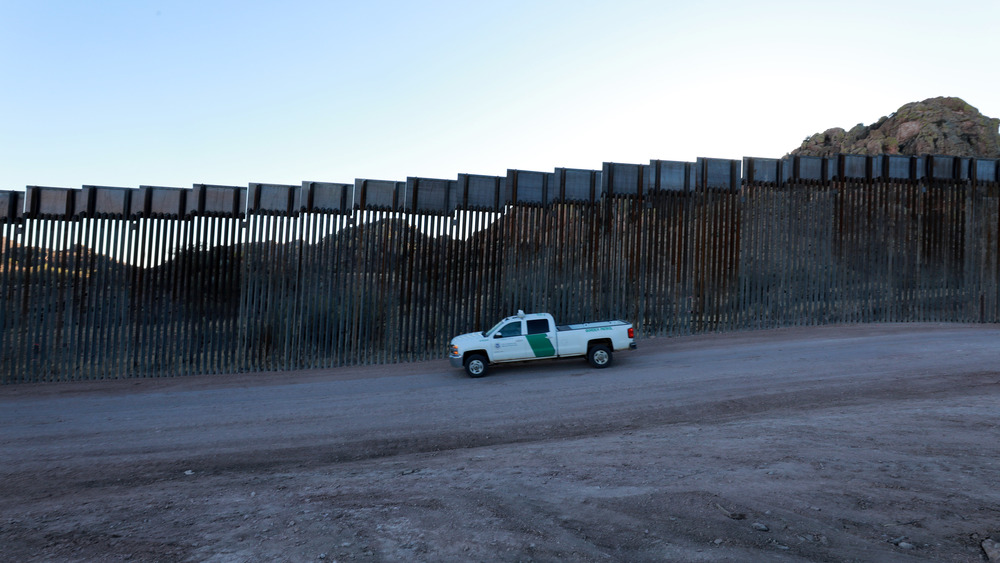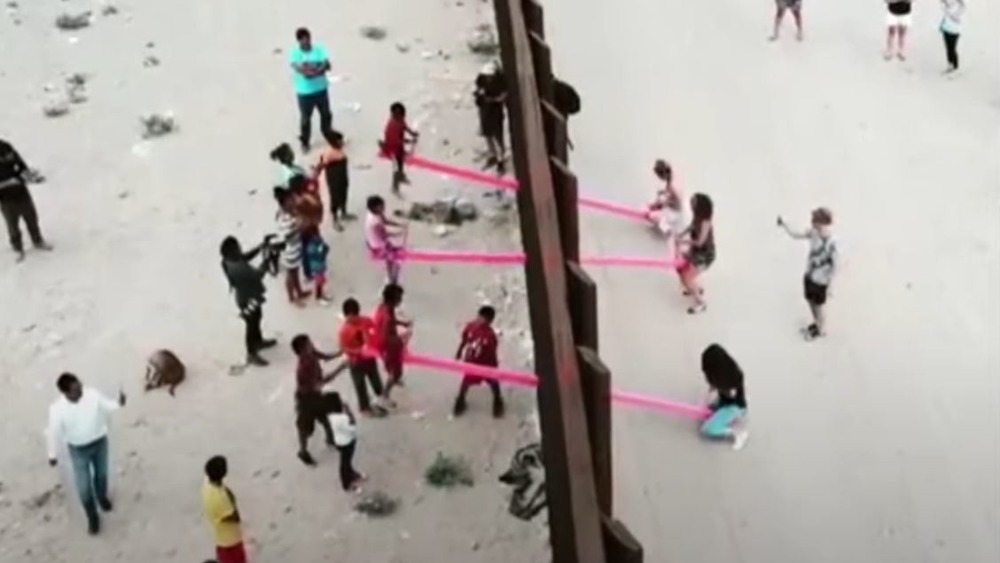The Real Reason See-Saws Were Installed At The US-Mexico Border Wall
Remember the good old days of "Mexico's going to pay for that wall"? A simpler time, when people largely believed that President Donald Trump's demagoguery was mere verbal bluster and couldn't possibly result in an actual attack such as that on the U.S. Capitol Building on January 6, 2021. The hot button topic for the age — circa 2016 and Republican presidential candidate Trump — was illegal immigration (not illegal voting). As the BBC recounts, Trump said that on "day one" he would begin working on "an impenetrable, physical, tall, powerful, beautiful, southern border wall," followed by, "we will use the best technology."
Well, the "best technology" in this case turned out not to be a golden-sheened forcefield emblazoned with the "Trump" logo. Rather, it was steel posts and concrete and only about 16 new miles of it, too (with about 350 miles of "replacement or secondary" barricade, per the BBC). Basically, it's a fence. There's even enough space between the slats to pass along a light snack or whatever.
However, something else has cropped up along the southern U.S. border besides underwhelming architecture and shattered visions of American dignity: a see-saw. A what, you say? Yes, one of those things children play on in parks. And it has been passed through the wall fence itself, bridging the gap between peoples in a way much more touching, moving, and "beautiful" than a giant wall of xenophobia and fear-mongering ever could be.
A see-saw for children to bridge the gap between nations
Project "Teeter Totter Wall," in sharp contrast to Trump's "Keep Out the Criminals, Rapists, and Drug Bringers" project, is an adorable, small, temporary art installation built between El Paso, Texas, and Juarez, Mexico. Workers first slid the pink see-saw beams into place in July 2019, with the border wall rightfully used as a literal (and poetic) fulcrum. Since then, children on both sides of the border have been able to face each other and get to know each other as they play together (parents, too). Footage of the see-saws being put to good, happy use is viewable on the Instagram account of one of the wall's designers, Ronald Rael, who along with co-designer Virginia San Fratello are honored and humbled that their design was put into implementation.
"It speaks to the fact that most people are excited about being together, and about optimism and about possibility and the future. And the divisiveness actually comes from the minority," San Fratello said, per NPR. Rael added, "Most importantly, it comes at a time when we are hopeful for change and that we start building more bridges instead of walls."
The art installation won London's Design Museum 2020's "Design of the Year" award, beating out 70 other nominees that included a 3D rendering of COVID-19 and set design for the Oscar's first foreign-language film to win Best Picture, 2019's Parasite. It looks like there's a good use for the border wall, after all.

